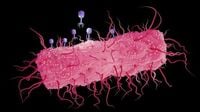On November 20, 1943, in laboratories at Indiana University and Vanderbilt University, two scientists—Max Delbrück and Salvador Luria—changed the course of genetics forever. Their experiment, known as the "fluctuation test," confirmed that mutations in bacteria arise spontaneously, not in response to environmental pressures. This finding, published that same year, helped solidify Charles Darwin’s theory of evolution by natural selection and set the stage for a cascade of breakthroughs that would eventually lead to the discovery of DNA’s structure and the dawn of modern molecular biology.
But the story of how we came to understand the very code of life is not the tale of a single experiment or a lone genius. It’s a narrative woven from the efforts of many—physicists, chemists, biologists, and even mathematicians—each bringing their own unique perspective to the riddle of heredity.
Delbrück’s journey into biology was, in many ways, accidental. According to Live Science, the German physicist, disillusioned by the rise of the Nazi regime, emigrated to the United States and grew fascinated by the idea of applying quantum mechanics and atomic theory to genetics. In California, he encountered a researcher working with Escherichia coli and its viral predator, the bacteriophage. Delbrück was astounded by how easily one could observe the effects of a single virus particle: "You could put them on a plate with a lawn of bacteria, and the next morning every virus particle would have eaten a macroscopic 1 mm hole in the lawn," he later recalled. This simplicity was, as he put it, "beyond my wildest dreams of doing simple experiments on something like atoms in biology."
Meanwhile, Salvador Luria, an Italian-Jewish doctor who also fled Nazi persecution, was similarly captivated by bacteriophages. The two met at Cold Spring Harbor Laboratory in New York in December 1940. Their shared curiosity about the fundamental nature of genes and mutations led to a partnership that would prove transformative for science.
Their experiment was as elegant as it was groundbreaking. They filled multiple tubes with E. coli bacteria, exposed these cultures to phages, and then plated them to observe resistance patterns. If resistance mutations were induced by the phage, every plate should have shown similar numbers of resistant colonies, arising only after exposure. But if mutations occurred randomly, before the phage was even introduced, then some cultures would have many resistant bacteria—so-called "jackpot plates"—while others would have few or none. The results were clear: mutations arise randomly, not as a direct response to environmental stress.
This experiment, as reported by Live Science, confirmed one of Darwin’s central ideas: natural variation is random, and selection acts upon these variations, rather than the environment directly causing adaptive changes. The work also put to rest the competing Lamarckian view, which held that organisms could acquire beneficial traits in response to their environment and pass them on to offspring.
The impact of Delbrück and Luria’s work rippled outward. In 1943, they began collaborating with Alfred Hershey, a microbial chemist at Washington University in St. Louis. Together, the trio demonstrated that bacteriophages contained more than one gene and could exchange genetic material—a process known as genetic recombination. Their discoveries laid the groundwork for later proof that DNA, not protein, was the carrier of genetic information. For these contributions, Delbrück, Luria, and Hershey were awarded the Nobel Prize in Physiology or Medicine in 1969.
If the 1943 fluctuation test was a crucial turning point, the next great leap came a decade later. In Cambridge, England, a young American geneticist named James Watson teamed up with Francis Crick. Their quest? To decipher the molecular structure of DNA itself, the very stuff genes are made of. According to The Irish Times, Watson’s breakthrough came at the age of 24, when he realized that DNA’s four bases—adenine (A), cytosine (C), guanine (G), and thymine (T)—could pair up in specific ways: A with T, and C with G. This insight, aided by advice from chemist Jerry Donohue, was the missing piece in the puzzle.
Watson and Crick’s model, published in Nature in 1953, revealed DNA as a twisted ladder—a double helix—with the base pairs forming the rungs. Their understated conclusion hinted at the magnitude of their discovery: "It has not escaped our notice that the specific pairing we have postulated immediately suggests a possible copying mechanism for the genetic material." As it turned out, this was precisely the mechanism by which life replicates itself.
Yet the triumph was not theirs alone. Rosalind Franklin, an X-ray crystallographer at King’s College London, provided crucial data that helped confirm the double helix structure. Franklin’s meticulous work, and her eventual sharing of key photographic evidence with Maurice Wilkins, allowed Watson and Crick to finalize their model. Tragically, Franklin died of cancer in 1968, before the Nobel Prize was awarded for the DNA discovery; Nobel rules prohibit posthumous awards.
Watson’s own journey was shaped by early influences, notably Erwin Schrödinger’s 1946 book What is Life?, which inspired not just Watson but also Crick and Wilkins to pursue biology. Watson’s career flourished: he led a Harvard laboratory starting in 1956, became director of Cold Spring Harbor Laboratory in 1968, and oversaw the discovery of mRNA splicing in 1977. Later, he played a key role in the Human Genome Project, fiercely advocating that the genetic sequence should not be patented and ensuring that 5 percent of US project funds were set aside to study ethical, legal, and social implications.
Watson’s life was not without controversy. In his later years, he made remarks about race that drew widespread condemnation and overshadowed aspects of his legacy. Yet, as The Irish Times notes, his contributions to science—his advocacy for open access to genetic information, his support for Irish science, and his impact as a mentor—remain monumental. He was awarded honorary degrees from Trinity College Dublin, Galway, Limerick, and University College Cork, and was remembered fondly by many students and colleagues despite his provocative personality.
From the randomness of bacterial mutations to the elegant structure of DNA, the story of genetics is one of curiosity, collaboration, and sometimes controversy. The pioneering work of Delbrück, Luria, Watson, Crick, Franklin, and so many others has given humanity the tools to understand its own origins and the intricate web of life on Earth. Their discoveries continue to shape medicine, forensics, biotechnology, and our very sense of what it means to be alive.
As we reflect on these landmark moments, it’s clear that the quest to decode life’s secrets is far from over. But thanks to the scientists who dared to ask the biggest questions—and sometimes, to challenge each other fiercely—we now stand on the shoulders of giants, peering ever deeper into the code that connects us all.




